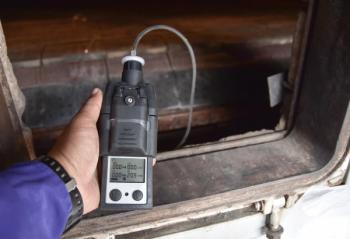
AI Model Enhances Cybersecurity for Internet of Medical Things Devices
Discover the latest advancements in medical devices and artificial intelligence, focusing on the transformative impact of IoMT devices in healthcare.
This video was made with the help of NotebookLM.
Researchers at Taibah University developed a hybrid Graph Convolutional Network (GCN)–transformer model that enhances the detection and prevention of cyberattacks on Internet of Medical Things (IoMT) devices.
Because of the threat of cyberattacks, the healthcare industry is grappling with new strategies to ensure data security, particularly when it comes to patient health records. New technology, such as the Internet of Medical Things (IoMT), continues to expand across healthcare systems. In their study, the researchers introduced a hybrid deep learning model that detects cyberattacks on IoMT devices accurately, marking a major step toward safeguarding sensitive patient information and ensuring medical data integrity (1).
What are IoMT devices?
IoMT devices help connect to healthcare IT systems through online computer networks (2). These devices are designed to streamline patient monitoring, resulting in positive externalities such as cost reduction and improving efficiency (2). When used in clinical practice, IoMT can track patient medication orders and the location of patients admitted to hospitals (2). IoMT devices can also connect ambulances en route to medical facilities and collect data from patient’s wearable health devices (2).
IoMT devices can range from wearable health monitors to hospital infusion pumps (1). These tools can generate massive amounts of real-time patient data that can be vital for diagnostics and treatment (1). However, the increasing interconnectivity of these devices has created new vulnerabilities, allowing hackers to infiltrate systems, manipulate readings, or even fabricate false data.
What did the Taibah University researchers do in their study?
To counter these risks, the Taibah University team developed a hybrid anomaly detection model that integrates a GCN with a transformer architecture. The GCN analyzes the structural relationships between devices within an IoMT network, while the transformer component identifies sequential dependencies and patterns associated with anomalies (1). Together, the system creates a dynamic and adaptive model capable of learning from evolving cyberattack behaviors.
The team validated their model using the CICIOMT24 data set, a newly developed data set that simulates real-world IoMT network traffic across more than 40 devices and 18 distinct types of cyberattacks (1). When compared to established machine learning (ML) models such as logistic regression, random forest (RF), and adaptive boosting, the hybrid model achieved improved accuracy and earlier attack detection rates (1).
Beyond outperforming traditional algorithms, Sabur’s model offers scalability for real-time healthcare environments, where continuous monitoring and rapid response are critical. The study underscores how integrating graph-based learning with transformer networks can revolutionize digital security strategies in modern medicine (1).
References
- Khan, M. Z.; Sabur, A.; Ghandorh, H. A Novel Internet of Medical Things Hybrid Model for Cybersecurity Anomaly Detection. Sensors 2025, 25 (20), 6501. DOI:
10.3390/s25206501 - Gillis, A. S. What is the Internet of Medical Things (IoMT)? Tech Target. Available at:
https://www.techtarget.com/iotagenda/definition/IoMT-Internet-of-Medical-Things (accessed 2025-10-22).
Newsletter
Get essential updates on the latest spectroscopy technologies, regulatory standards, and best practices—subscribe today to Spectroscopy.





